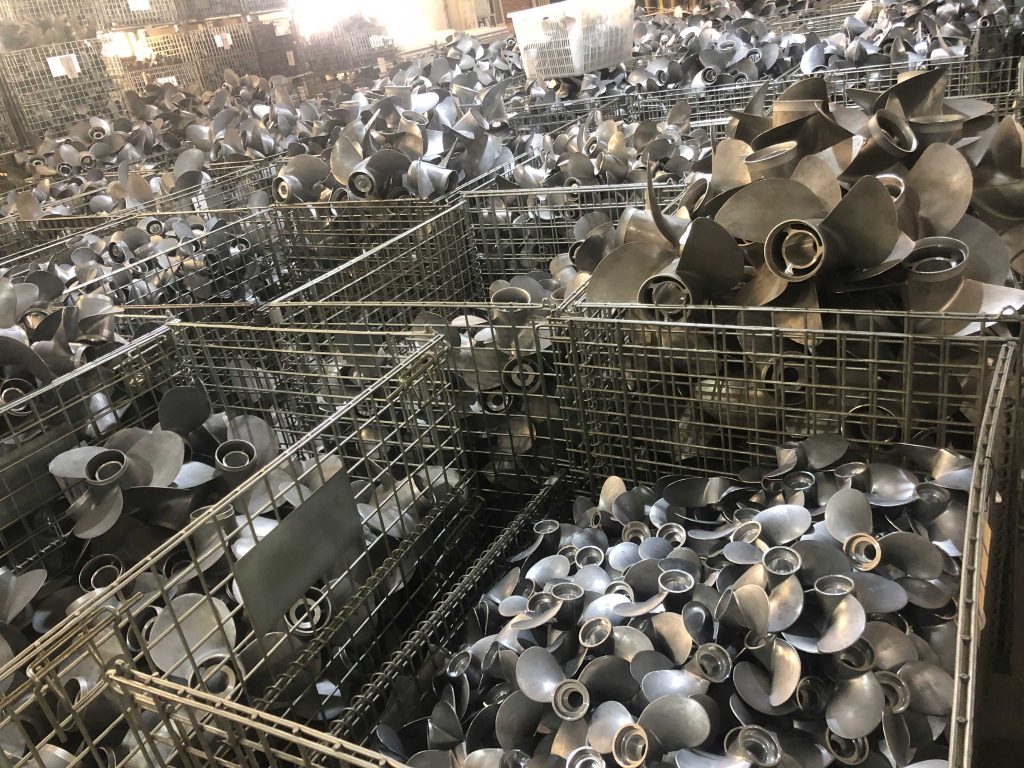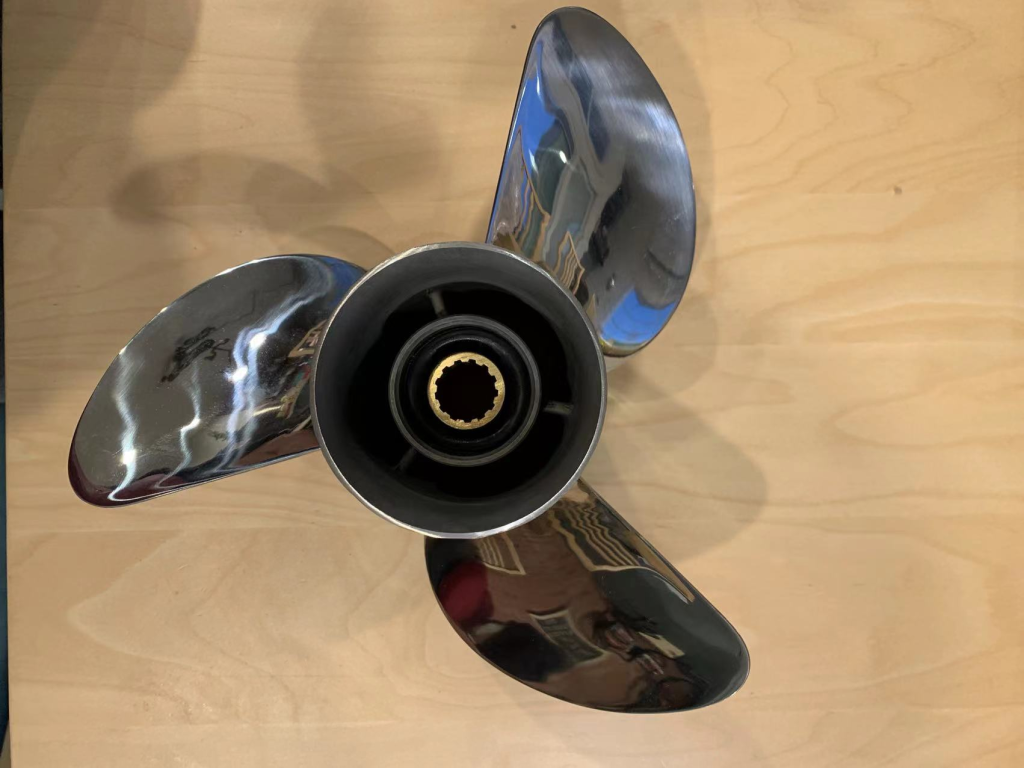As a boating enthusiast, I know firsthand the importance of having a properly functioning boat propeller. The propeller is the driving force behind the vessel, and having the right one can make all the difference in your boating experience.
In this article, I will explain how boat propellers work, the importance of selecting the best one for your vessel, factors to consider when choosing a propeller, how to measure the correct size, maintenance and care tips, common problems and how to fix them, and upgrading for better performance.
1: Choose the right propeller for your boat’s size, weight and engine horsepower and torque
2: Choose the number of propeller blades
3: Choose the propeller blade pitch
4: Choose the diameter of propeller blade
5: Choose stainless steel propeller or aluminum propellers depending on the purpose of your boat
Introduction to Boat Propellers
At its most basic, a boat propeller is a rotating blade that generates thrust and propels the vessel forward. The blades are attached to a central hub, which is then connected to the boat’s engine via a shaft. As the engine turns the propeller shaft, the propeller blades spin, creating a force that moves the boat through the water.
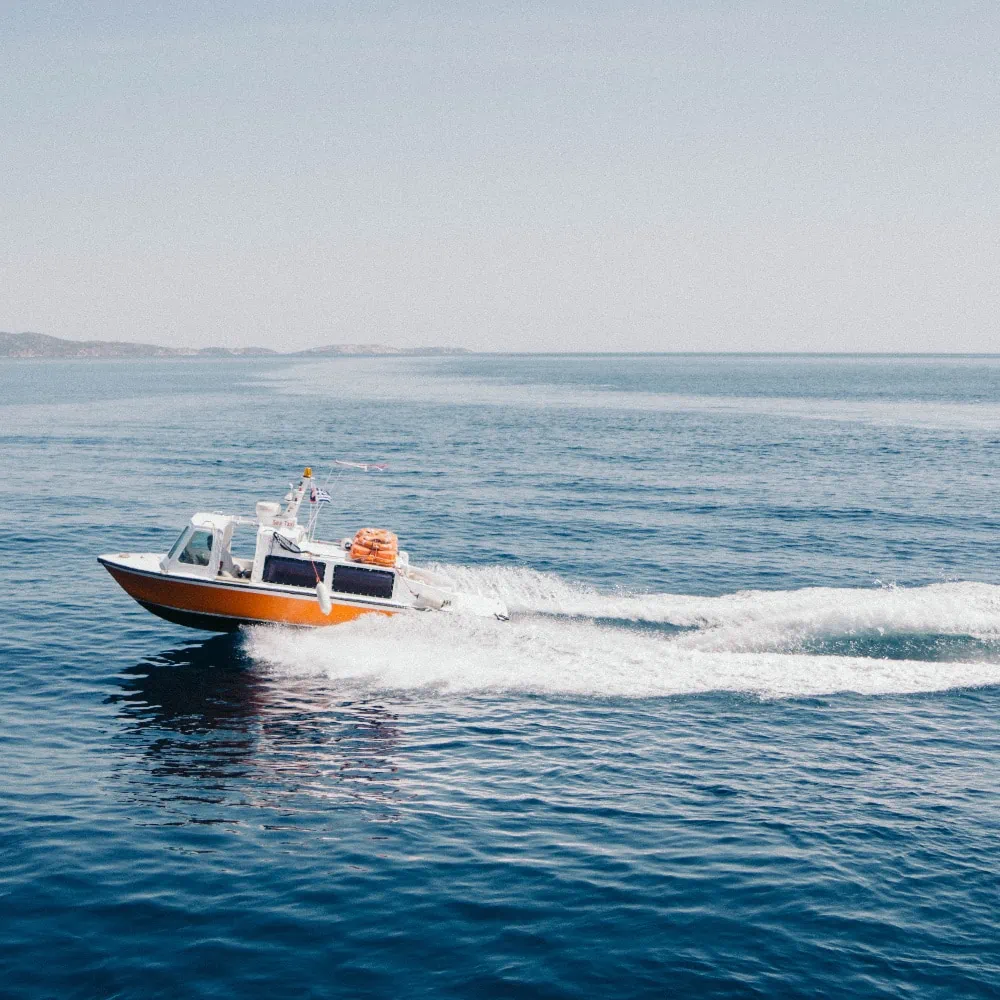
Understanding How a Boat Propeller Works
A boat propeller works similarly to a fan in that it pulls water in one direction and pushes the boat in the opposite direction. However, unlike a fan, a propeller is not just pushing air but is instead pushing against water, which is much denser and more difficult to move. To overcome this, a boat propeller must be designed to create a high level of thrust while also being efficient enough to not waste energy.
The Importance of Selecting the Best Boat Propeller for Your Vessel
Selecting the right propeller for your vessel is crucial for smooth sailing. A propeller that is too small or too large for your boat’s engine can cause a range of problems, from reduced speed to engine damage. Additionally, certain types of boats, such as those used for water sports or fishing, require specific propellers to perform optimally. Choosing the wrong propeller can negatively impact your boating experience, so it’s essential to take the time to ensure you have the right one.
1.Determine your boat’s weight and intended use. Factors such as the boat’s weight, type of water (fresh or saltwater), and intended use (fishing, skiing, cruising, etc.) can all affect propeller choice.
2.Calculate the pitch and diameter needed. Propeller pitch is the distance the propeller moves forward in one revolution, and diameter is the width of the propeller. These can be calculated using online calculators or by consulting a propeller specialist.
3.Consider the number of blades. Propellers can have three, four, or even five blades. The number of blades can affect speed, fuel efficiency, and handling, so choose the one that best suits your needs.Test different propellers. If possible, try out different propellers to determine which one provides the best performance and fuel efficiency for your boat and engine.

Factors to Consider When Choosing a Boat Propeller
When choosing a boat propeller, there are several factors to consider, including the size and weight of your vessel, the horsepower and torque of your engine, the number of blades on the propeller, and the pitch and diameter of the blades. You’ll also need to consider the type of boat you have and what activities you’ll be using it for. For example, a boat used for water sports will require a different propeller than one used for fishing.
The pitch of the propeller is the distance it moves forward in one revolution. A higher pitch means more speed but less acceleration. A lower pitch means more acceleration but less speed.
The diameter of the propeller is the distance across its circle. A smaller diameter means less drag but less thrust. A larger diameter means more thrust but more drag.
The rake angle of the propeller is the angle between its blades and its hub. A lower rake angle means better performance at low speeds but less efficiency at high speeds. A higher rake angle means better performance at high speeds but less efficiency at low speeds.

Different Types of Boat Propellers
There are several different types of boat propellers available, each with its unique design and characteristics. Some common types include the standard propeller, which is the most basic type and is suitable for most boats. There are also propellers specifically designed for water sports, such as wakeboarding and skiing, as well as propellers designed for fishing boats. Additionally, there are high-performance propellers that can provide increased speed and acceleration.
Advantages and disadvantages of three-bladed propeller and four-bladed propeller:
Three-bladed propeller
Smooth running: The three-blade propeller runs smoothly, which improves the comfort of passengers on board.
Easy to maintain: The three-blade propeller is relatively simple in design, so it is easy to maintain and repair.
Good fuel efficiency: Three-blade propellers are generally more fuel efficient than four-blade propellers, making them a popular choice for commercial and recreational boats.
Four-bladed propeller
Acceleration: Four-bladed propellers are designed to provide superior acceleration and power, so four-bladed propellers are the primary choice for use on larger, heavier vessels.
Less cavitation: Four-bladed propellers produce less cavitation (bubble formation and breakage) than three-bladed propellers, so four-bladed propellers will be more efficient and last longer.
High maneuverability: Four-blade propellers provide greater maneuverability and control in tight spaces, such as when docking or navigating in narrow channels.
Less noise and vibration: Compared to three-blade propellers, four-blade propellers can operate with less noise and vibration, making it more comfortable for passengers on board.
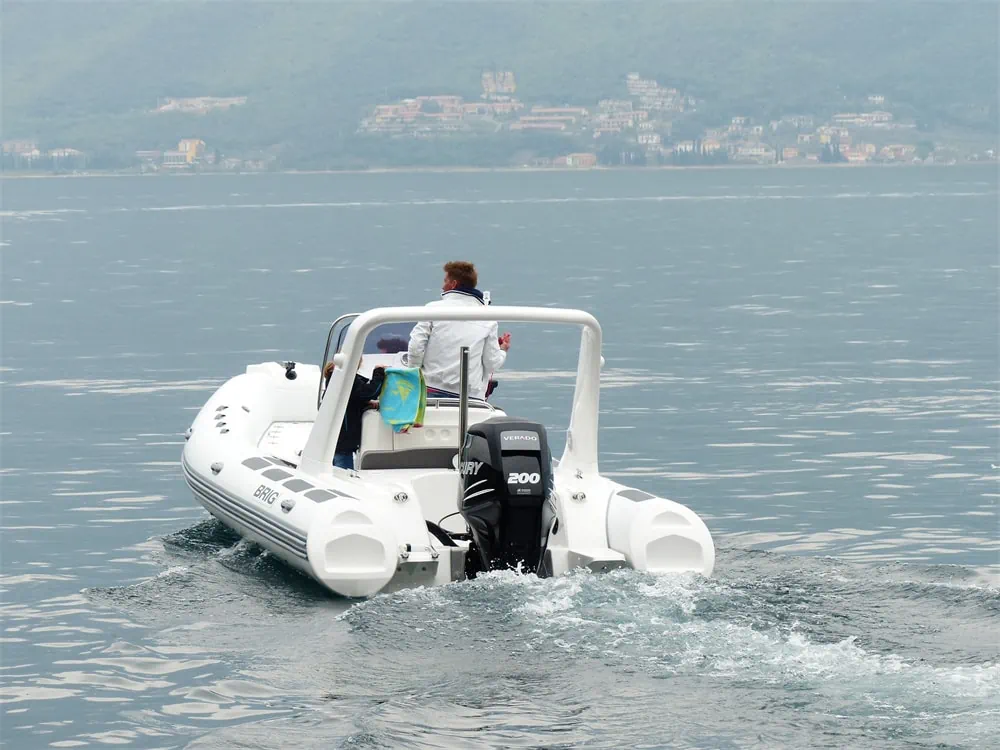
Maintenance and Care for Your Boat Propeller
Proper maintenance and care are essential for ensuring your boat propeller lasts as long as possible and functions correctly. This includes regularly inspecting the propeller for damage, such as cracks or missing pieces, and cleaning it to prevent corrosion. You’ll also need to check the propeller’s alignment and make any necessary adjustments to ensure it’s running smoothly. Finally, it’s essential to use the right lubricants and replace any worn or damaged parts promptly.
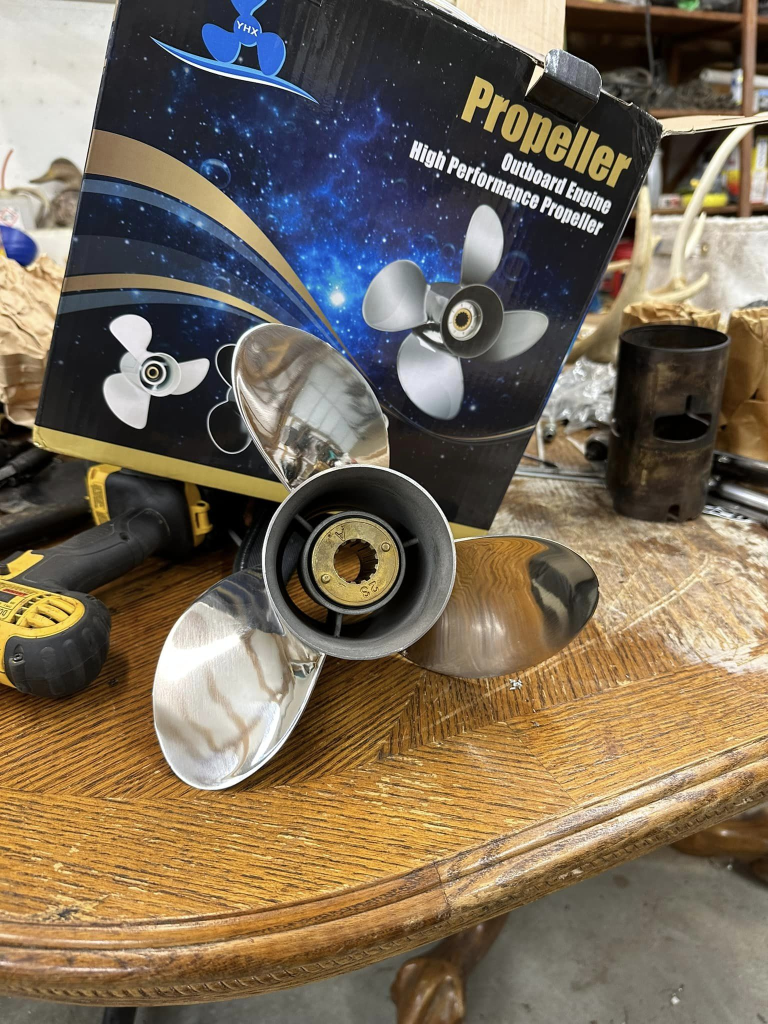
Common Boat Propeller Problems and How to Fix Them
Despite proper maintenance and care, boat propellers can still experience problems. Some common issues include damage from hitting debris in the water, corrosion, and bent blades. If you notice any damage or performance issues with your propeller, it’s essential to address them promptly to prevent further damage or engine problems. In some cases, minor damage can be repaired, while more severe damage may require replacement.
Upgrading Your Boat Propeller for Better Performance
If you’re looking to improve your boat’s performance, upgrading your propeller can be an excellent option. High-performance propellers can provide increased speed and acceleration, making them ideal for water sports or racing. However, it’s essential to choose the right propeller for your vessel and engine to avoid causing damage or reducing performance.
Upgrading propeller choose to upgrade directly to stainless steel propeller is a very good choice, stainless steel propeller has many advantages over aluminum alloy propeller.
1.Durability. Stainless steel is a strong and durable material, they do not bend or break easily and are more resistant to corrosion, so stainless steel propellers can withstand the harsh marine environment and are not easily damaged by debris in the water.
2.Performance. Stainless steel propellers can provide excellent performance in terms of speed, acceleration and operation. They can maintain their shape and pitch even under high loads, resulting in better fuel efficiency and speed.
3.Long life. Compared to other materials, stainless steel has a longer life span, so stainless steel propellers can last for many years.
4.Versatility. Stainless steel propellers are suitable for a variety of ships and engines, and can be customized to meet different needs.
5.Appearance. The appearance of stainless steel propeller is smooth and shiny, which can make the boat look better.
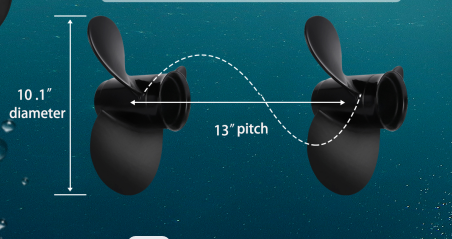
Conclusion about How To Choose a Propeller For Your Boat
In conclusion, selecting the right boat propeller is essential for smooth sailing and optimal performance. Factors to consider when choosing a propeller include the size and weight of your vessel, the horsepower and torque of your engine, and the type of boat and activities you’ll be using it for. Proper maintenance and care are also crucial for ensuring your propeller lasts as long as possible and functions correctly. By taking the time to choose the right propeller and caring for it properly, you can enjoy a safe and enjoyable boating experience for years to come.
CTA: If you’re in need of a new boat propeller or have questions about which one is right for your vessel, contact a trusted boating professional for guidance and assistance.
FAQ about How To Choose a Propeller For Your Boat
Q:How do I determine what propeller is suitable for my boat?
A:Determine the correct replacement propeller for your boat based on the make and model of your boat’s engine and the specifications of your current propeller. You can consult your boat’s owner manual or ask a marine supply store for assistance.
Q:What does an old propeller do to a boat?
A:Old ship propellers, like any other mechanical device, can wear out over time and become less efficient. As a result, they may need to be repaired or replaced to maintain the performance of the ship.
Q:What should a ship do with a new propeller?
A:Test the propeller: The ship’s crew will need to test the new propeller to ensure that it is properly installed and functioning correctly. This might involve running the engine at different speeds and checking the propeller’s performance under different conditions.

